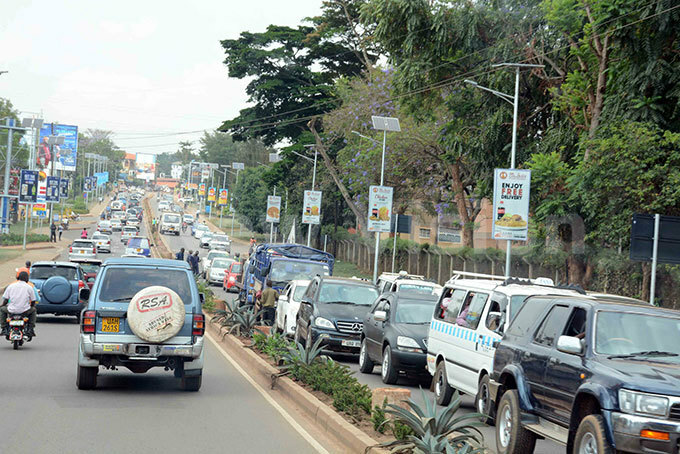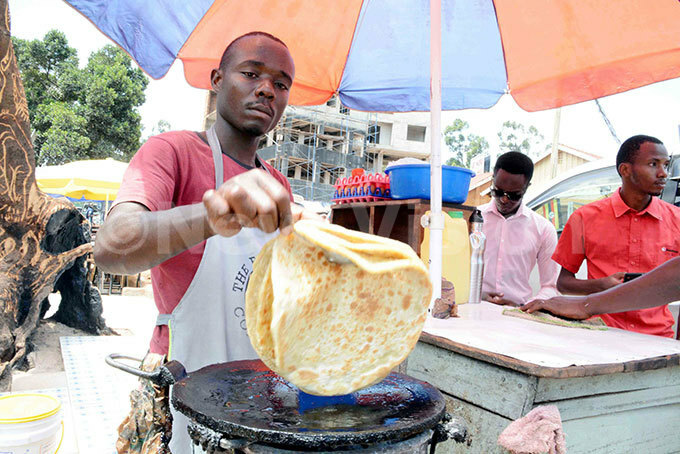Kampala, the city of fresh food and bodabodas
Oct 15, 2018
A number of journalists on a media tour of the East African Community partner states did not want to leave Uganda because of the cheap and tasty dishes they were served.

TOURISM
Legendary stories say Kampala, one of the fastest growing cities in Africa obtained its name from the beautiful herds of elegant Impalas from the grassland antelope animal family that lived in the tropical woods and tall grass, which made the ‘Seven Hills' a natural tourist attraction to visitors.
The city, has however outdone the Seven Hills, now standing on many more hills, graced by green vegetation and red rooftops around its suburbs.
To a visitor, Kampala city has one of the lowest cost of living, with plenty and cheap local food in especially restaurants that prepare local dishes.
A number of journalists on a media tour of the East African Community partner states did not want to leave Uganda because of the cheap and tasty dishes they were served at Shaka Zulu Restaurant in Bugolobi, one of the city suburbs.
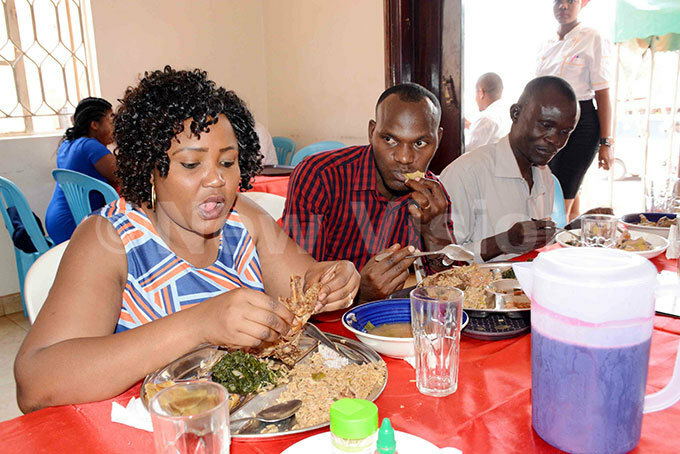
Journalists from the EAC partner states enjoy food at Shaka Zulu in Bugolobi, with a jug of fresh juice. Photo by Eddie Ssejoba
At sh20,000 (about $4.5) the journalists, in Uganda for the first time were surprised that they were served dishes and in addition given free fresh juice, which they said was so far one of the cheapest.
But far cheaper than that, just opposite the restaurant, mainly students from the Makerere University Business School, Nakawa lined up at a ‘rolex' (a mix of chapatti and spanish omelette) stall, and each served at a mere cost of sh2,000.
The rolex, made on a sigiri (local cooking stove) is ready within less than six minutes, made while watching. Next to the stall, a lady was also frying Irish potatoes (chips) at the same price or less. All these foodstuffs are locally grown.
"I must return to this place when I visit Uganda again, I have never seen such cheap food. There must be plenty of food in the city," remarked Patrick Moshi, a communications officer with the EAC Business Council in Arusha, Tanzania.
But the thousands of reckless bodaboda riders make Kampala one of the most risky cities in the region, riding from all directions and giving no respect to zebra crossings and walkways, coupled with old public taxis, whose drivers are ever impatient to other road users.
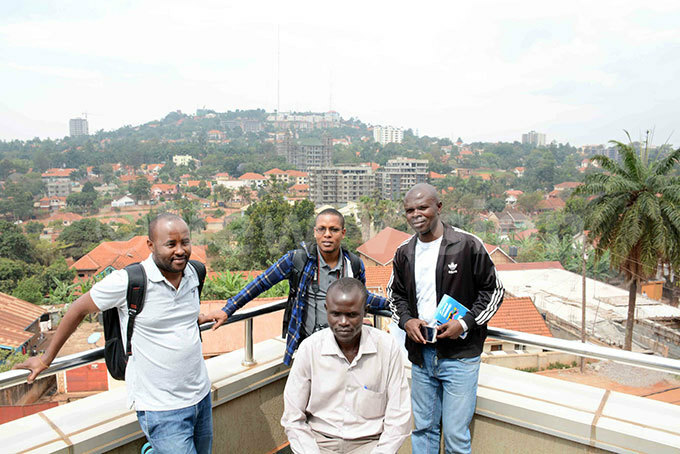 Journalists from the EAC on top of a building in Ntinda. Photo by Eddie Ssejoba
Journalists from the EAC on top of a building in Ntinda. Photo by Eddie Ssejoba
A Burundian journalist wondered why drivers ‘intend' to knock pedestrians even at night when they expect traffic to be low.
But generally, the people in Kampala are calm and willing to go an extra mile to help especially visitors. One should give credit to a local who would stop his or her business to explain or offer to escort a visitor asking for direction to the final destination.
Amazingly, the city has had a facial transformation of late that even people who live in it get mesmerised when they visit places they knew.
Places like Acacia Mall in Kololo, a hot spot for foreigners, Pearl of Africa Hotel at Nakasero hill, Kasubi Tombs, which is under restoration, Uganda Museum, Serena Hotel, Imperial Royale, Commonwealth Resort Munyonyo, Sheraton Hotel Kampala, Lubiri Palace, Makerere University Kampala, one of the oldest in Africa whose rankings have been shooting up of recent.

Buildings in Naguru and Kololo hill. Photo by Eddie Ssejoba
Religious headquarters of the different faith in Uganda also located in Kampala city, on top of hills, which are good scenes to visit.
They include Rubaga Hill for the Roman Catholics, Namirembe Hill for the Anglican Church of Uganda, Old Kampala and Kibuli hills for the Muslim faith, Bahai Temple in Kikaaya, plus the Hindu temple in Bwebajja along Entebbe Road and Uganda Martyrs Shrine Namugongo, which has had the biggest number of local and foreign pilgrims in Africa on June 3 every year.
Plus recently upgraded and expanded roads, with trees and flowers planted by the roadside, streetlights everywhere and traffic lights in most junctions all make the city new to even the local residents. There are several other beautiful scenes for sightseeing plus the recently launched city tours especially in the outskirts.
For Ugandans who have been away for some years, apart from the Entebbe Airport, which is under renovation, one is welcomed by the newly opened Kampala Expressway, so far the best highway in East and Central Africa, breaking off at Kajjansi to Speke Resort Munyonyo or joining Busega at the apex of the Southern Bypass, which is also getting renovated.
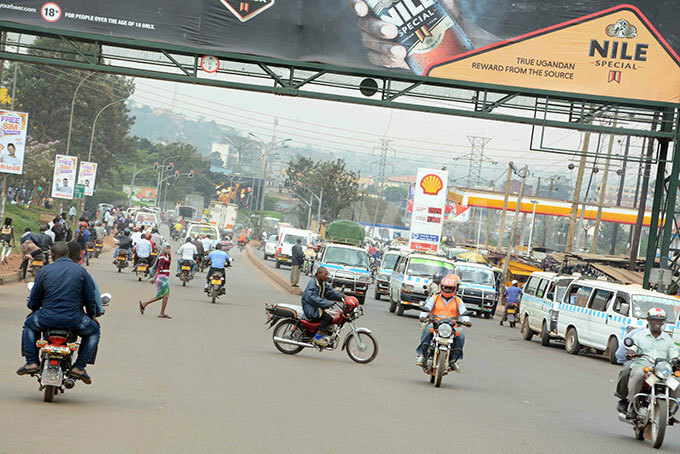
A busy street in Nakawa. Photo by Eddie Ssejoba
About 50km south of Kampala, visitors leaving the city can get the chance of visiting the Uganda Equator. Surprisingly, even some members from EAC partner states did not know the Equator. "What does Equator mean," one asked.
However, many foreigners take time to pose for pictures at the spot, thanks to the road humps that were recently put in place to control speeding motorists on the Kampala-Masaka highway.
The journalists travelled in a coaster bus branded with Uganda's Gorillas, a reminder to visitors that such tourism sites are worth visiting, away from the city.
